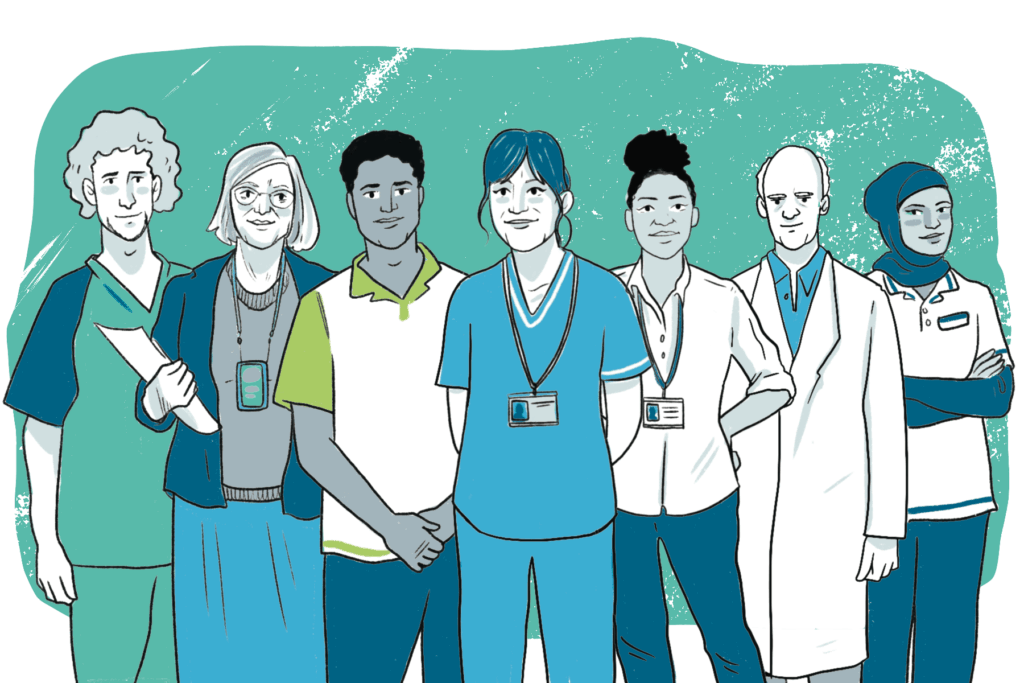Haemophilia care at Mulago Hospital, Kampala, Uganda
An early start today, giving ourselves plenty of time to navigate the Kampala morning rush hour. If you think London is bad, then you need to experience this! Our trusty driver, Vincent, snaked through the traffic with ease as we watched an impressive sunrise through a haze of exhaust fumes and orchestra of car horns.
Finally, we arrived at Mulago Hospital. This is the only hospital in Uganda that provides haemophilia care. Our first stop on campus was the paediatric haematology ward. The team here are responsible for the care of visiting haemophiliac patients. The “road” up to the ward entrance was yet another unpaved dirt track littered with pot holes and the occasional car part. Wheelchair access is non-existent, and I dread to imagine the difficulty of navigating the final stretch to the entrance using crutches. We were informed that many patients experiencing a joint bleed just have to battle their way through to the ward.
Many haemophilia patients were at the ward today, having been kept in overnight after attending the Ugandan Haemophilia Foundation (UHF) meeting. This had given them the opportunity to be treated with factor which had been donated by the World Federation of Hemophilia (WFH). Some of the patients live a long distance from Kampala, and many were experiencing a bleed, so being able to receive factor would help to somewhat alleviate this.
Despite prior warnings from Dr Kate, I still wasn’t prepared for the paediatric ward. Some concrete walls and corrugated iron roof formed the building’s main structure. The porch entrance was strewn with cardboard to form a makeshift waiting area. The ward itself was a badly lit jungle of multi-coloured iron bed frames, with crowds of anxious parents scattered between them. This was considered a non-busy day on the ward according to Dr Kate, as most of the beds had only one or two children in them. In a small room towards the back of the ward we met with two young brothers with Haemophilia A and their grandmother, and then two older boys who were also brothers with Haemophilia B. They had varying levels of joint damage, still way beyond what we would expect to see in the UK for children their age. Severe knee swellings made the simplest task of walking to the treatment room a challenge.
However, the most shocking case was one of the factor 9 deficient boys having had an eye removed. He had previously had bleed in to his eye after a stick had become lodged in it from roaming through the bush in his local village. Having received factor at first in Kampala, the condition worsened for him back home, and rather than being referred back to Mulago for further treatment, his local clinic took the decision to operate and remove the eye. This highlights the lack of haemophilia awareness across the country and the difficulty in accessing specialist care.
At Mulago, the standard of practice for haemophilia care is very different to that in a developed country such as the UK. Cannulas are used to administer factor, for the majority of the 152 diagnosed patients factor is only given on demand, and there is no dedicated specialist haemophilia comprehensive care team. However, throughout the day we met with a number of engaged paediatricians, haematologists, nurses and a physiotherapist, all with an interest in haemophilia care. Despite the large number of general patients they see, this small team have established the basis for a dedicated haemophilia clinic. The nurses worked tirelessly throughout the morning, administering factor for up to 4 patients at time. Many patients commented how their nurse, Sister Mary, treats them all as if they were her own children, answering calls at any hour of the day or night, and taking care of them at Mulago. Haemophilia nurses really are a special breed!
In afternoon Dr Kate delivered a training presentation to a group of paediatricians, haematologists, nurses and junior doctors, discussing the best ways to identify and treat patients. Using me as a case study of what haemophiliacs can look like when they grow up, most of the room refused to believe I was indeed a severe haemophiliac. We were then taken on a tour to haematology lab to see the coagulation analyser which has now been set up for around 3 years. This has enabled accurate diagnosis of haemophilia and has led to the number of patients growing from a handful 8 years ago, to 152 at present. However, it is estimated that there are at least between 1500-2000 people with haemophilia in Uganda. Some of these patients will likely be dying during infancy or at birth. Diagnosis is the first significant step in getting patients effectively treated.
Mulago hospital really was a different world. Being immersed in to this environment whilst recalling my own haemophilia care in the UK, made it an extremely surreal experience. At Mulago, positive steps are being made since the WFH Twinning Programme with Great Ormond Street Hospital, London, but there is still much to be done in haemophilia care across Uganda. Making care and treatment more accessible across the country needs to be another priority, as well as engagement and continued training of hospital staff in haemophilia. I’d like to thank everyone I met throughout the day for giving me an insight in to their work. I sincerely hope I have the opportunity to return to Mulago in the future.
Luke Pembroke reporting from Kampala, Uganda. You can keep up to date with the trip on twitter @ClotThickens and over on The Clot Thickens youtube channel.


